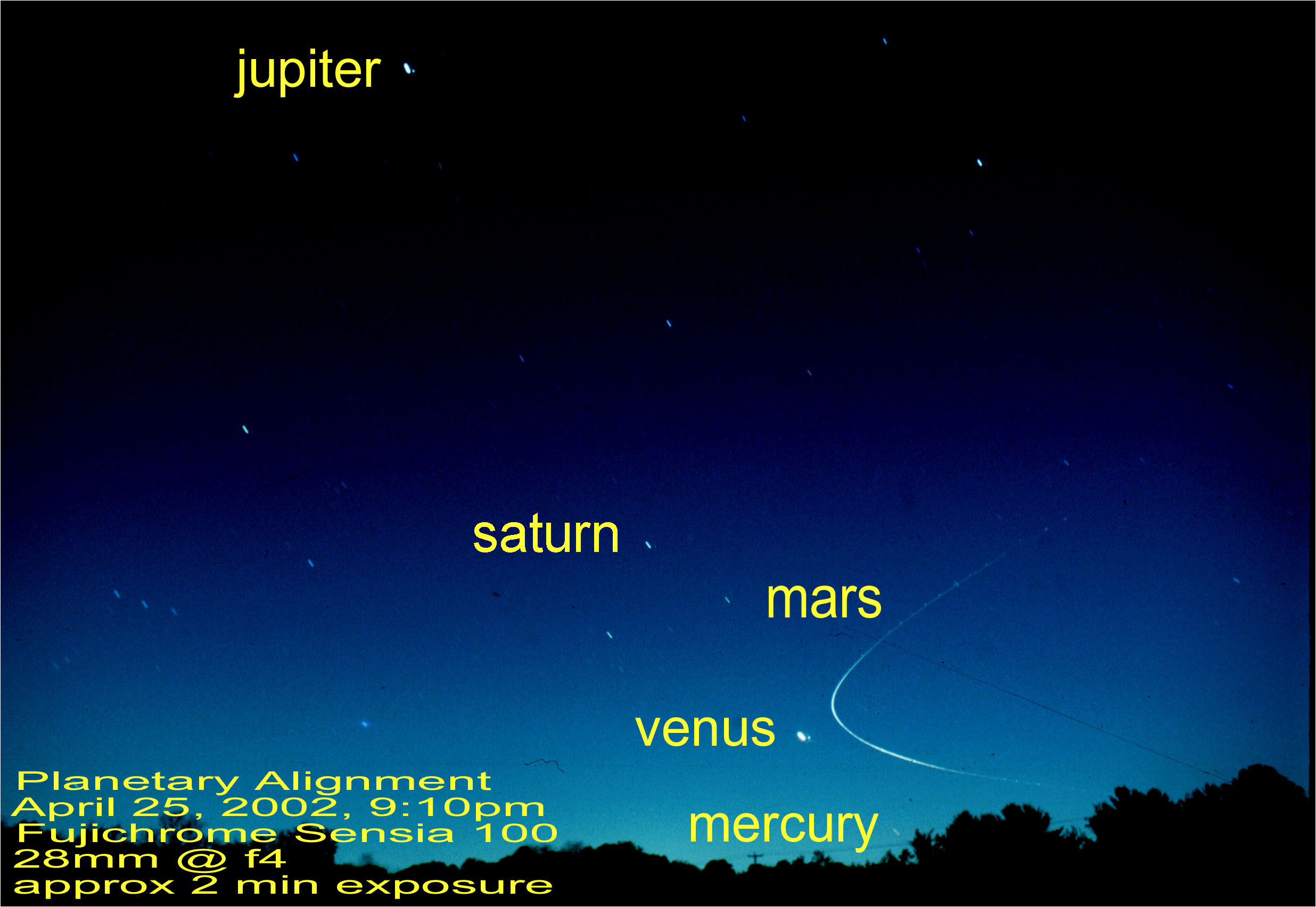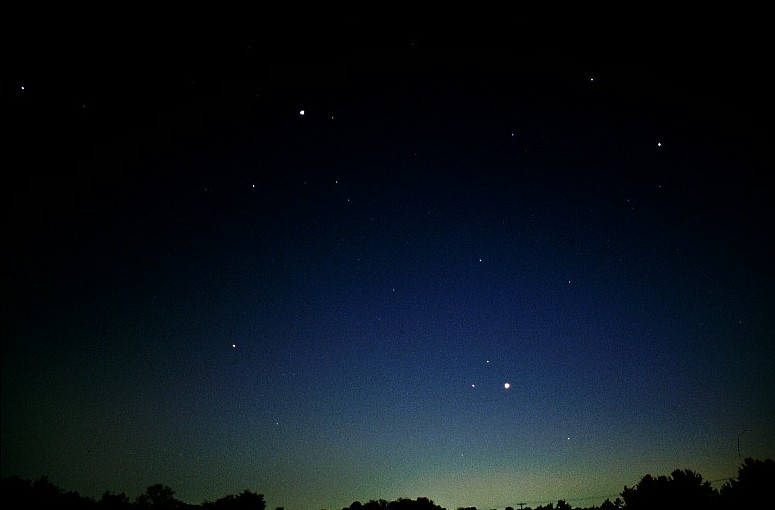Lunar
Moon - February 24, 2002
Olympus Camedia D-460 digital camera afocally through a 40mm Plossl
Eyepiece
in an Orion 120mm (4.7") Skywatcher refractor telescope on a CG-4 equatorial
mount
I've recently acquired my late Grandmothers Olympus OM-2n camera with
some good lenses
and an Olympus OM-1 MD on Ebay. With these two cameras I plan to capture
more
celestial bodies on film as i figure out what the heck i'm doing!
More to come from the scope....
The Great Planetary Alignment of 2002
This year is real special indeed in that between mid April and mid May
2002 you can see all 6 (look down) naked-eye
planets in the sky at the same time just shortly after sunset. This
event wont happen again for another 40 years.
I was able to get only five days worth of shots since the weather here
in Maryland in unpredictable at best.
The shots from May 5 turned out to be the best of the lot so far since
my learing curve is shortening as i do this
kind of photography. All the following shots were done with a 35mm
camera on a tripod from the same observing
site near my home in Crownsville, MD
April 25, 2002 - The dance has begun
May 3rd, 2002
This shot was during a somwhat cloudy evening and i was lucky for the
break that allowed all 6 planets to be seen.
The brightest 'star' in the pic is Venus at the lower right. Just below
and to the right of Venus is Mercury.
Above Venus the two "stars" are from left Saturn and Mars. Jupiter
is at the top left center of the photo and is a little dim
because of the passing cloud in the shot. Pic taken with an Olympus
OM-2n with 28mm wide angle lens at f/2.5 for approx
30 seconds on Kodak Elite Chrome 400 (I found some old stock)
May 5th, 2002
I love this shot the most. The slide looks fantastic and my scanner
is not doing it justice. There are more than twice as many
stars on the slide than what can be seen in this scan. The best part
of this day's shot is the equilateral triangle formed by Mars at
top, Saturn on left, and bright Venus on the right. Mercury is to the
lower right of Venus and the star Aldeberan is to the lower
left of Saturn. Jupiter is still high in the sky very bright at the
top left of the pic in the constellation Gemini. The only full constellation
in the shot is Auriga to the upper right. The bright star in Auriga
is called Cappella. To the other side of the pic you can see a
very bright Betegeuse in the constellation Orion. Look closely and
you can make out Oriion's belt stars setting into the horizon.
Pic taken with an Olympus OM-2n with 28mm wide angle lens at f/2.5
for approx 30 seconds on Kodak Elite Chrome 200 and
processed with Photoshop LE 4.0
Just for kicks i labeled the above scan
M45 - Dec 26, 2003 22:56 est.
For Christmas i got an adaptor that lets me take pictures afocally thru
the
telescope eyepiece. Using an Olympus Camedia D460 1.3M pixel camera
set at ISO500 I was able to get this shot of M45-Pleides aka The Seven
Sisters
in the Constellation Taurus. The only editing i did with photoshop
was to remove
camera noise artifacts. The camera has it limits as its shutter speed
is too
quick to get more stars. But this was exciting enough for me now as
i
was surprised i got anything at all.



